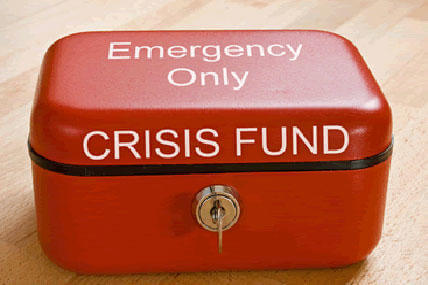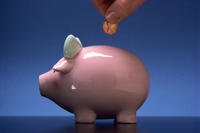Your grandmother may have called it a rainy day fund. Financial professionals typically call it a cash reserve or emergency fund. Whatever its name, the purpose is the same: having some money set aside for when the unexpected happens so that you don't have to sell things or go in debt to deal with it. And while the concept is fairly simple, there's more here than meets the eye -- starting with what is meant by "some money" and "set aside."
How much is enough?
The generally accepted rule of thumb for your emergency fund's size is that it should equal at least three to six months' worth of your committed monthly expenses. Why this amount? Well, because one of the primary reasons to have an emergency fund is to keep you afloat financially if you should suddenly experience a loss of household income.
But protecting against lost income isn't the only reason to keep a stash of cash. It's also important to have money available to pay for unexpected expenses that your regular monthly cash flow can't cover. Even if you feel your paycheck is secure, bad things do still happen to good people and sometimes those things require cash. As a result, the amount of money that should be set aside (but not the need for having it!) really depends on the life situation and circumstances of the individual putting it away.
Where to save it?
Then there's the question of where to put it. Does it all go into savings? Can you use CDs? What about using "conservative" investments? The answers are maybe, yes and no. The bottom line here is that since you have no way of knowing when an emergency will occur, you have no way of predicting when these funds will be needed. So your savings really should be accessible and not subject to market volatility. In other words, you need to be able to get the funds quickly and know they'll be worth as much as or more than they were when you set them aside. That typically means using savings accounts, money markets and maybe some short-term CDs for some of the money -- regardless of how low the interest rates on these products may be.
To pump up the returns a little, it's often a workable strategy to create a two-tier emergency fund -- the first tier being savings or money markets, and the second tier being a short-term CD. Keep this thought in mind, though, when it comes to emergency funds, return of principal is more important than return on principal.
When to use it?
So what's considered rain? Clearly, a big car repair, an insurance deductible or an AC on the fritz during the hot summer months come with a green light to tap your emergency fund. But what about that unexpected visit to the vet or an unplanned weekend getaway with your significant other? The reality is that these can all be valid reasons to tap your cash. Life happens and your emergency fund will allow you to experience both good and bad without having to accrue debt or access longer-term investments. Just take care to minimize using your funds for fun things. Using rainy day money when the sun is shining is OK once in a while, but shouldn't become a habit. Finally, regardless of your strategy, it's important to systematically add to your emergency fund. That way, when you have unplanned expenses, you'll automatically be restocking it.
Whether you call it an emergency fund, cash reserve, or rainy day fund like Grandma did, this isn't your "get rich" money. It's your "don't get poor" money. So set one up, and use it wisely.









